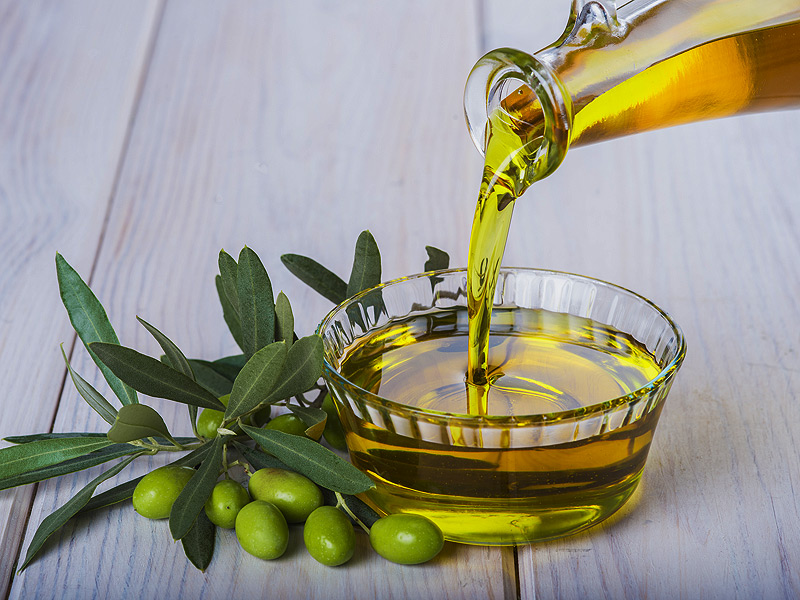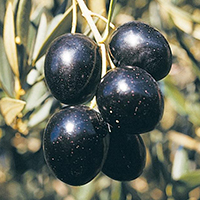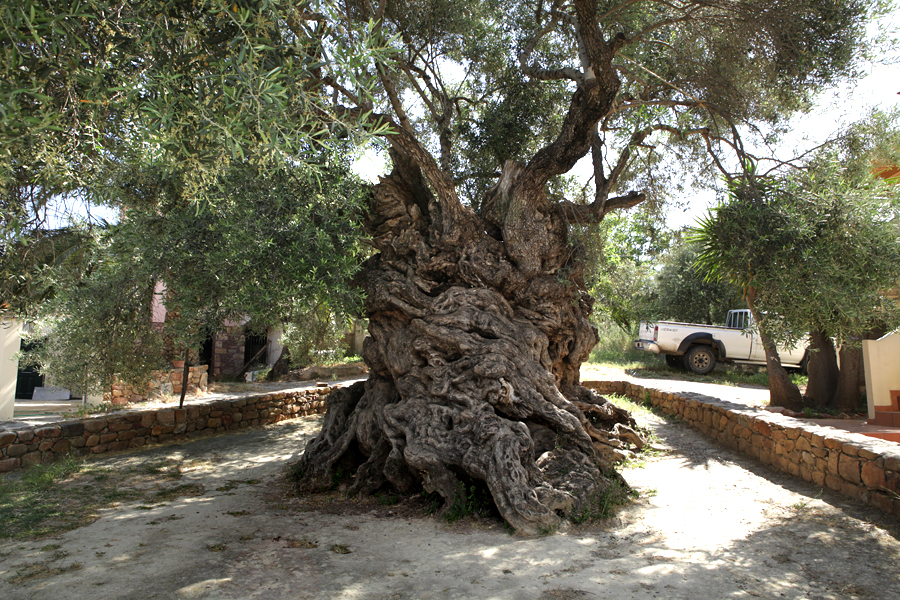SPAIN’S OLIVE OIL COUNTRY.
 The Mediterranean basin is considered to be the hub of worldwide olive oil production so its not surprising to hear that Spain is the largest producer of this healthy and versatile oil in the world, cultivating more than 300 million olive trees covering an area of five million acres.
The Mediterranean basin is considered to be the hub of worldwide olive oil production so its not surprising to hear that Spain is the largest producer of this healthy and versatile oil in the world, cultivating more than 300 million olive trees covering an area of five million acres.
Production of olive oil is certainly not restricted to the large agro-commercial enterprises. Throughout November, elderly folk and their families lay a tarpaulin on the floor of their orchards and thrash their olive trees with nothing more technological than canes or bamboos to release the ripening olives from the branches. Generations of local olive-growing have taught them that when picking olives for pressing, its all about the timing if you want to achieve the right balance between oil content and acidity.
Spain is the world’s biggest virgin olive oil producer and proof of its quality is the existence of a total of 28 Designations of Origin. Andalusia (12 DO) and Catalonia (5 DO) are the main olive oil producing regions in Spain, but there are many more. For example, the region of Castile-La Mancha has four designations of origin, and the mountains in Toledo province are home to huge olive groves that are open for visits.
You will also find top quality virgin olive oil with designation of origin certification in Aragón, the Balearic Islands, Extremadura, Navarre and La Rioja.
There are more than 260 varities of olive that are grown in Spain. We treasure a rich heritage that offers immense culinary possibilities: Arbosana, Alfafara, Argudell, Arróniz, Bical, Callosina, Canetera, Carrasqueño de Alcaudete, Carrasqueño de la Sierra, Castellana, Changlot Real, Gordal de Hellín, Limoncillo, Llumeta, Lucio, Manzanilla de Hellín, Morrut, Ocal, Pajarero, Palomar, Pequeña de Casas Ibáñez, Pico Limón, Picual de Almería, Rojal de Tarragona, Royal de Calatayud, Vallesa, Vera, Verdial de Badajoz, Verdial de Cádiz, Verdial de Huévar, Villalonga…and many more. Discover them!
Buying Oil
The Spanish name for the tree is "olivo", the fruit is "oliva" and oil is "acetite de oliva". For those of us without any ‘olivo’ harvesting experience, knowing which one to choose is quite a minefield. Should you buy virgin, extra virgin or cold pressed extra virgin and should it be in clear, smoked or the darkest bottles? And should those bottles be plastic or glass?
Three different qualities of olive oil exist — Extra Virgin Olive Oil (Aceite Virgen Extra), Virgin Olive Oil (Aceite Virgen) and Olive Oil (Aceite), together with a large growth in Organic Olive Oil production. Some manufacturers are also offering a ‘first press’ or ‘moon harvest oil’ where acidity and depth of colour changes to create even more nuances to flavour and viscosity, so you can see how it has become a revered business.
As a general rule when purchasing an oil, high grade extra virgin oil is mainly used as a condiment and not in the cooking process. Drizzle it over fish, meat, steamed vegetables or baked potatoes, in salad dressings, as a bread dipper, as the base for mayonnaise and uncooked sauces, or simply rubbed on a piece of bread for breakfast.
By heating virgin olive oil to over 200 to 250 degrees, you are running the risk of creating an oxidised oil that can do your body more harm than good, plus destroy all its nutrients. But although there is ample research to support this claim, many chefs and families still cook in extra virgin with its high smoking point and the resulting flavour it gives to dishes. Thankfully, most Portuguese and Spanish people will use their best virgin olive oil just for drizzles and a dips.
Virgin extra or the simple olive oil can be used for frying and cooked dishes. The smoke point is lower, and they are not so high in anti-oxidants and flavour and ideal for cooking purposes.
Spare a thought for the patience required in the preparation of these olives at your table. Olives picked direct from the tree are bitter and almost inedible, and so need to undergo a curing process lasting up to six weeks during which time they are scored then immersed in salt, rinsed, salted again, rinsed, etc., etc., to bring out their flavour and make them ready for your table.
Spanish olives offer a whole different world of flavour to explore, with the famous Manzanilla olive being almost as well known as the Spanish Rioja wine. Manzanilla olives are from the small town in Andalusia also famed for its sherry, and it’s these big, juicy, green olives that you so often find pitted and stuffed with anchovies, almond, pimento or garlic.
Growing Olives
 The Picual (Scientific name: Olea europaea) olive tree is the predominant variety for olive oil production in many areas of Southern Spain. The large black olives of the younger trees are excellent for curing as table olives with a peppery, firm flavour. One of the main characteristics of Picual olive oil is its stability to oxidation, to rancidity, and the temperature cycles in frying .On the other hand, picual olive oils, with their high polyphenol levels, help to reduce the oxidation of fats in the bloodstream. It is also ideal for preserving raw or cooked foods.
The Picual (Scientific name: Olea europaea) olive tree is the predominant variety for olive oil production in many areas of Southern Spain. The large black olives of the younger trees are excellent for curing as table olives with a peppery, firm flavour. One of the main characteristics of Picual olive oil is its stability to oxidation, to rancidity, and the temperature cycles in frying .On the other hand, picual olive oils, with their high polyphenol levels, help to reduce the oxidation of fats in the bloodstream. It is also ideal for preserving raw or cooked foods.
In conclusion, Picual is one of most healthy olive oil varieties but.... with over 260 varieties of olive to choose from you will certainly not find a tapas cafe in the whole country that does not have a bowlful on tap. The mere thought would start a riot!
For those of us who want to grow and harvest our own olives, living in a hot climate gives you the perfect start. Olives are generally drought tolerant, and if your particular plot of land has calciferous soils, the chances of a successful harvest are made even easier. As a guideline your olive diary should look something like this:
- January and February: The olive trees are severely pruned, traditionally by hand but with the advancement in technology and the sheer numbers of trees, more and more groves are pruning by machine.
- March and April: The tree wakes up from its winter hibernation and begins to sprout a few leaves. The sun begins to shine and the blossom appears on the trees.
- May: The blossom sets and the drupes start to form.
- June, July, August and September: The fruit grows.
- October, November and December: This is normally the harvest period and varies depending on the olive variety, the region and the weather. Green olives are generally harvested in September to be ready for the table in October. Olives for oil are picked around early to mid-November when the olives have just turned green to purple and they are at their fullest with oil. November and December is normally the period for the dark olive harvest.
Although they seem to have found the Philosopher’s Stone when it comes to longevity, olives do have a vulnerable Achilles heel. The olive fruit fly, Bactrocera oleae is a major problem for olives in the Mediterranean Basin. The larvae of this phytophagous feeds on the fruit of the tree causing serious bruising and damage making them inedible and of no use for the production of oil. Changes in humidity levels from late summer onwards accelerates their proliferation, and even though there are preventative measures for treatment, a trained eye can often notice the problem early on and halt its progression.
Exploring Olive Regions
Jaén, Andalusia’s olive grove
Andalusia is a region of olive groves. This is especially true of the province of Jaén. You will see this from the moment you arrive – everything here revolves around olive oil. Come and sample the local gastronomy and explore the Olive Route in the Sierra Mágina Mountains, where there are huge olive groves set around the Sierra Mágina Nature Reserve. You will visit towns and villages that reflect olive growing culture, through the unusual architecture of their farmhouses, and in their traditions and crafts. You will have the chance to visit “almazaras” (mills where olives are crushed), take part in tasting sessions and discover the whole virgin olive oil production process at the Olive Culture Museum, just 8 kilometres from Baeza and less than 20 from Úbeda, towns whose Renaissance monuments have the UNESCO World Heritage designation.
The Olive Route in the province of Jaén takes in many small towns and villages. For example: Cambil, with its ancient olive trees; Jimena, with a huge valley of olive groves that stretches from the Sierra Mágina Mountains to the banks of the Guadalquivir; arid Cabra del Santo Cristo, the olive grove of the desert. To find out more and design the best route for you, we would recommend you contact the tourist offices in Jaén.
Another interesting option is to do the “Vía Verde del Aceite” (Olive Oil Greenway) by bike or on foot. It runs for 60 kilometres from the north of the city of Jaén, through the surrounding mountains, crossing many different olive groves.
Monumental olive groves in Cordoba
Cordoba , also in Andalusia, is another of the main olive oil producing areas in Spain, with many towns and villages dependent on the olive. Many of these organise breakfasts and tasting sessions featuring virgin olive oil, and there are guided visits to places like Hornachuelos, Montoro and Adamuz, close to the city of Cordoba and the Cardeña-Montoro and Hornachuelos Nature Reserves, home to more than 100,000 hectares of olive groves. Furthermore, the province of Cordoba has many ancient olive trees in places such as Almedinilla, Baena, Luque, Montilla, Priego de Córdoba and Lucena. In fact, the "Priego de Córdoba" Protected Designation of Origin area covers 29,628 hectares and includes the municipalities of Almedinilla, Carcabuey, Fuente Tójar and Priego de Córdoba, in the heart of the Sierras Subbéticas Nature Reserve. At Cordoba’s tourist offices you can get information on the many mills and bottling plants open to the public, and the activities available.
Olive oil in Catalonia
Catalonia is the second Spanish region in number of designations of origin. These are to be found mainly in the Costa Brava, Costa Dorada and Lleida areas. In the first of these, special mention should be made of towns and villages such as Cabanes, Pau, Toroella de Montgrí, Ventalló and Vilafant. For its part, the Costa Dorada has Reus, a historic capital for olive oil production, and places such as Cambrils, Horta de Sant Joan, with an ancient olive tree, the El Priorat area and Ribera del Ebro, all in the province of Tarragona. Here you will find cooperatives that offer guided tours to show you how olive oil is produced first hand. In the province of Lleida, we would suggest visits to the regions of Les Garrigues, El Segrià and L’Urgell. A few places not to be missed are: the Oilve Oil Eco-museum, in Pobla de Cèrvoles; the Castelldans Olive Oil Museum; and the Olive Oil Theme Park in Les Borges Blanques which has 54 ancient olive trees.


